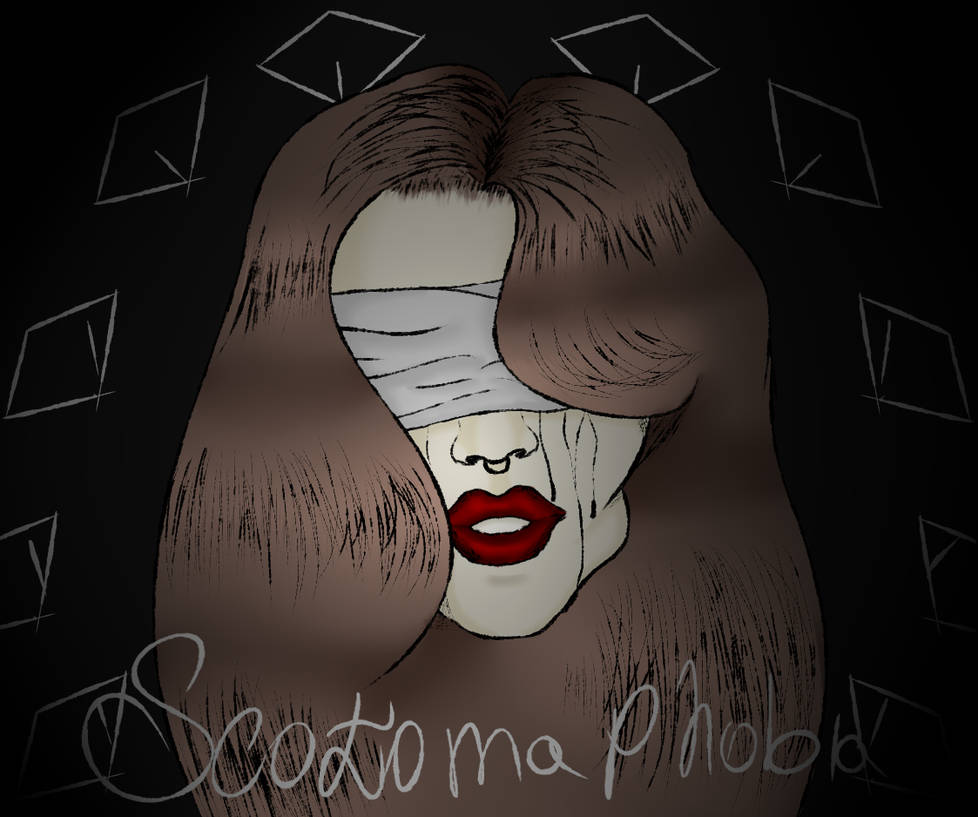Introduction to Scotomaphobia
Have you ever felt a sudden, overwhelming fear at the thought of blind spots? If so, you might be experiencing Scotomaphobia. This lesser-known phobia can have a significant impact on daily life and mental well-being. In this blog post, we will delve into what Scotomaphobia is, its symptoms and causes, as well as ways to overcome and manage this fear effectively. So grab a cup of tea and let’s explore the world of Scotomaphobia together!
Symptoms and Causes
Scotomaphobia, the fear of blind spots, can manifest in various ways. Individuals with this phobia may experience intense anxiety or panic when faced with situations involving potential blind spots, such as driving or navigating crowded spaces. Physical symptoms like rapid heartbeat, sweating, and trembling are common when confronted with triggers related to Scotomaphobia.
The causes of Scotomaphobia can stem from past traumatic experiences involving blind spots or a heightened sense of vulnerability in situations where visibility is limited. Additionally, genetic predispositions or learned behaviours from caregivers can contribute to the development of this fear. The fear of the unknown that blind spots represent can also play a significant role in exacerbating.
Understanding the symptoms and causes of Scotomaphobia is crucial in addressing and managing this fear effectively. By identifying triggers and exploring underlying reasons for this phobia, individuals can work towards overcoming their fears and regaining control over their lives.
The Psychological Impact
Living with Scotomaphobia can have a profound psychological impact on individuals. The fear of blind spots can lead to heightened anxiety and constant worry about potential dangers lurking in unseen areas. This fear can manifest as panic attacks, insomnia, or even avoidance behaviours that disrupt daily life.
Individuals with Scotomaphobia may struggle with feelings of isolation and frustration, as the fear of blind spots can make them feel misunderstood by others. This sense of isolation can further exacerbate their anxiety and reinforce negative thought patterns.
Moreover, It can also affect self-esteem and confidence levels. Constantly being on high alert for potential blind spots can erode one’s sense of security and control over their surroundings. Over time, this may lead to feelings of helplessness and vulnerability.
Seeking support from mental health professionals is crucial in addressing the psychological impact. Through therapy, individuals can learn coping mechanisms to manage their fears effectively and work towards reclaiming a sense of empowerment in navigating their environment.
Overcoming and Managing Scotomaphobia
For individuals struggling, overcoming and managing this fear can be a challenging journey. Recognizing the presence of blind spots in our perception can trigger intense anxiety and distress. However, some strategies can help in coping with Scotomaphobia.
One approach is cognitive-behavioural therapy (CBT), which focuses on changing negative thought patterns and behaviours associated with the fear of blind spots. By working with a therapist, individuals can learn to reframe their beliefs about blind spots and develop coping mechanisms to reduce anxiety levels.
Mindfulness techniques, such as deep breathing exercises and meditation, can also be beneficial in managing Scotomaphobia. These practices promote relaxation and help individuals stay present in the moment rather than getting overwhelmed by fears of unseen dangers.
Additionally, gradual exposure to situations that trigger fear of blind spots can desensitize individuals over time. By facing their fears in a controlled manner, people with Scotomaphobia can gradually build confidence in managing their anxiety levels.
Overcoming Scotomaphobia requires patience, persistence, and support from mental health professionals or loved ones who understand the impact of this phobia on daily life.
Treatment Options for Scotomaphobia
When it comes to treating, there are several options available that can help individuals overcome their fear of blind spots.
One common treatment approach is cognitive-behavioural therapy (CBT), which focuses on identifying and challenging negative thought patterns related to the fear of blind spots. This type of therapy can help individuals develop coping mechanisms and gradually expose themselves to situations that trigger their phobia.
Another effective treatment option is exposure therapy, where individuals are gradually exposed to their fears in a controlled environment. By facing their fear of blind spots head-on, individuals can learn to manage their anxiety and reduce the intensity of their phobia over time.
In some cases, medication may be prescribed to help manage symptoms of anxiety or panic attacks associated with Scotomaphobia. Individuals need to work closely with mental health professionals to determine the most suitable treatment plan for their specific needs and circumstances.

Tips for Loved Ones of Those with Scotomaphobia
If someone you care about is struggling with Scotomaphobia, there are ways you can support them through their journey. Educate yourself about the condition to better understand what they’re going through. Offer a listening ear and be patient when they need to talk about their fears or anxieties related to blind spots.
Encourage them to seek professional help from therapists or counsellors specializing in anxiety disorders. Be understanding of their limitations and avoid placing unnecessary pressure on them to confront their fears before they are ready.
Help create a safe and supportive environment for your loved one by being mindful of potential triggers that may worsen their symptoms. Encourage healthy coping mechanisms such as deep breathing exercises or mindfulness techniques during moments of distress.
Above all, show compassion and empathy towards your loved one as they navigate their fear of blind spots. Your unwavering support can make a significant difference in their journey towards overcoming Scotomaphobia.
Conclusion
Scotomaphobia is a real and impactful fear that can significantly affect an individual’s daily life. Those experiencing this phobia need to seek help and support from mental health professionals to overcome their fears and learn how to manage them effectively. With the right treatment options, coping strategies, and understanding from loved ones, individuals suffering from Scotomaphobia can work towards leading a fulfilling and fear-free life. By shedding light on this lesser-known phobia, we hope to raise awareness and encourage empathy towards those struggling with invisible but deeply troubling blind spots in their minds.

